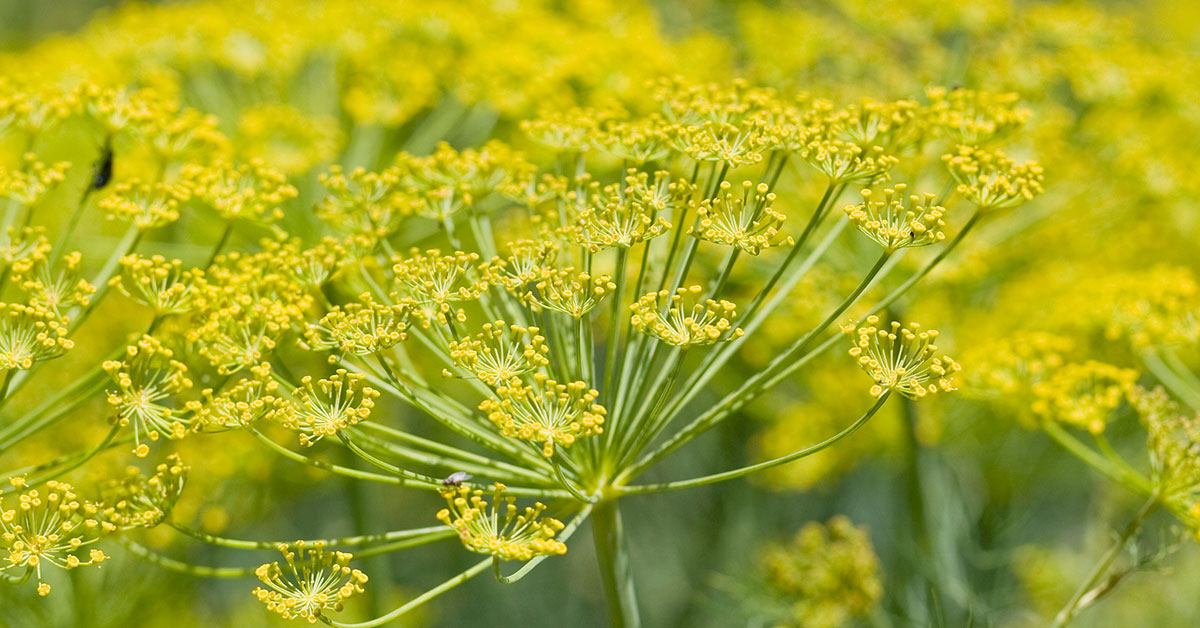Zone 5 offers a suitable environment for growing a wide variety of perennial herbs, despite the moderately cold winters with minimum temperatures ranging from -20 to -10 degrees Fahrenheit (-29 to -23 degrees Celsius). Growing perennial herbs in zone 5 is quite possible!
By selecting cold-hardy plant species and cultivars, gardeners can establish a thriving herb garden that provides fresh, aromatic, and flavorful herbs year after year. Proper care, including well-draining soil, adequate sunlight, and appropriate watering and fertilizing practices, is essential to ensure the health and productivity of these perennial herbs.
As a result, gardeners in zone 5 can enjoy the benefits of their herb garden for culinary, medicinal, and ornamental purposes, adding diversity and charm to their outdoor spaces.
Grow these 16 perennial herbs in zone 5
Zone 5 is characterized by moderately cold winters, with minimum temperatures ranging from -20 to -10 degrees Fahrenheit (-29 to -23 degrees Celsius). There are several perennial herbs that can grow successfully in this climate:
- Chives (Allium schoenoprasum): Cold-hardy and versatile, chives thrive in zone 5 and add a mild onion flavor to various dishes.
- Garlic chives (Allium tuberosum): Similar to common chives, garlic chives are well-suited for colder climates and provide a garlic flavor.
- Lovage (Levisticum officinale): A hardy herb with a strong celery-like flavor, lovage can tolerate zone 5 temperatures.
- Mint (Mentha spp.): Many mint species, such as spearmint (Mentha spicata) and peppermint (Mentha x piperita), are cold-hardy and grow well in zone 5.
- Oregano (Origanum vulgare): Cold-hardy varieties of oregano can tolerate low temperatures and grow well in zone 5.
- Sage (Salvia officinalis): Many varieties of sage, including ‘Berggarten’ and ‘Purpurea,’ are cold-hardy and can survive in zone 5 with proper care.
- Sorrel (Rumex acetosa): A cold-hardy perennial herb, sorrel can grow successfully in zone 5.
- Tarragon (Artemisia dracunculus): Both French and Russian tarragon can grow as perennials in zone 5, with Russian tarragon being more cold-hardy.
- Thyme (Thymus spp.): Various species and cultivars of thyme, like common thyme (Thymus vulgaris), lemon thyme (Thymus x citriodorus), and creeping thyme (Thymus serpyllum), can grow in zone 5.
- Lemon balm (Melissa officinalis): This aromatic herb is cold-hardy and grows well in zone 5.
- Catnip (Nepeta cataria): Catnip is a perennial herb that can tolerate the cold temperatures of zone 5.
- Yarrow (Achillea millefolium): Yarrow is a hardy perennial herb that can withstand the cold temperatures of zone 5.
- Fennel (Foeniculum vulgare): In zone 5, fennel can be grown as a perennial herb with proper care, providing a striking architectural presence in the garden and a unique anise-like flavor for culinary use.
- Comfrey (Symphytum officinale): Comfrey thrives in zone 5, where it can be grown as a hardy perennial herb, offering medicinal properties and valuable organic matter for improving soil fertility.
- Bee balm (Monarda didyma): Bee balm flourishes in zone 5 as a perennial herb, attracting pollinators with its vibrant blooms while providing both ornamental value and medicinal benefits to the garden.
- Anise hyssop (Agastache foeniculum): Anise hyssop thrives in zone 5 as a perennial herb, producing beautiful purple flowers that attract pollinators while offering a delightful licorice-like flavor for culinary and medicinal purposes.
Remember that success growing these plants in zone 5 will depend on various factors, including microclimates, soil conditions, and proper care.
Tips for growing perennial herbs
Growing perennial herbs in zone 5 can be a rewarding and relatively easy experience as this climate provides good growing conditions for many herb species. Here are some tips for growing perennial herbs in zone 5:
- Choose the right herbs: Select herbs that are well-suited for zone 5, such as lavender, sage, rosemary, thyme, oregano, chives, and mint. These herbs are hardy and can withstand cold winters and mild summers.
- Select a sunny location: Most herbs need plenty of sunlight to thrive, so choose a location that receives at least six hours of direct sunlight per day. If possible, select a location that is sheltered from harsh winds.
- Prepare the soil: Make sure the soil is well-draining, as many herbs don’t like to be in standing water. Amend the soil with compost or aged manure to improve soil fertility and drainage.
- Water regularly: While many herbs are drought-tolerant, it’s still important to water them regularly, especially during dry periods. Water deeply and avoid overhead watering, which can promote fungal growth.
- Fertilize occasionally: Herbs generally don’t require a lot of fertilizer, but a balanced fertilizer can help encourage healthy growth. Fertilize once or twice a year with a slow-release fertilizer or organic compost.
- Mulch around the base of the plants: Mulching helps retain moisture in the soil, prevent weeds from growing, and regulate soil temperature. Use organic mulch such as straw, leaves, or bark.
- Prune regularly: Regular pruning helps promote bushier growth and keeps the plants looking neat and tidy. Prune herbs as soon as they begin to show signs of growth in the spring.
By following these tips, you can enjoy a successful herb garden in zone 5. Remember to choose the right herbs, select a sunny location, prepare the soil, water regularly, fertilize occasionally, mulch, and prune regularly to keep your herbs healthy and productive.













